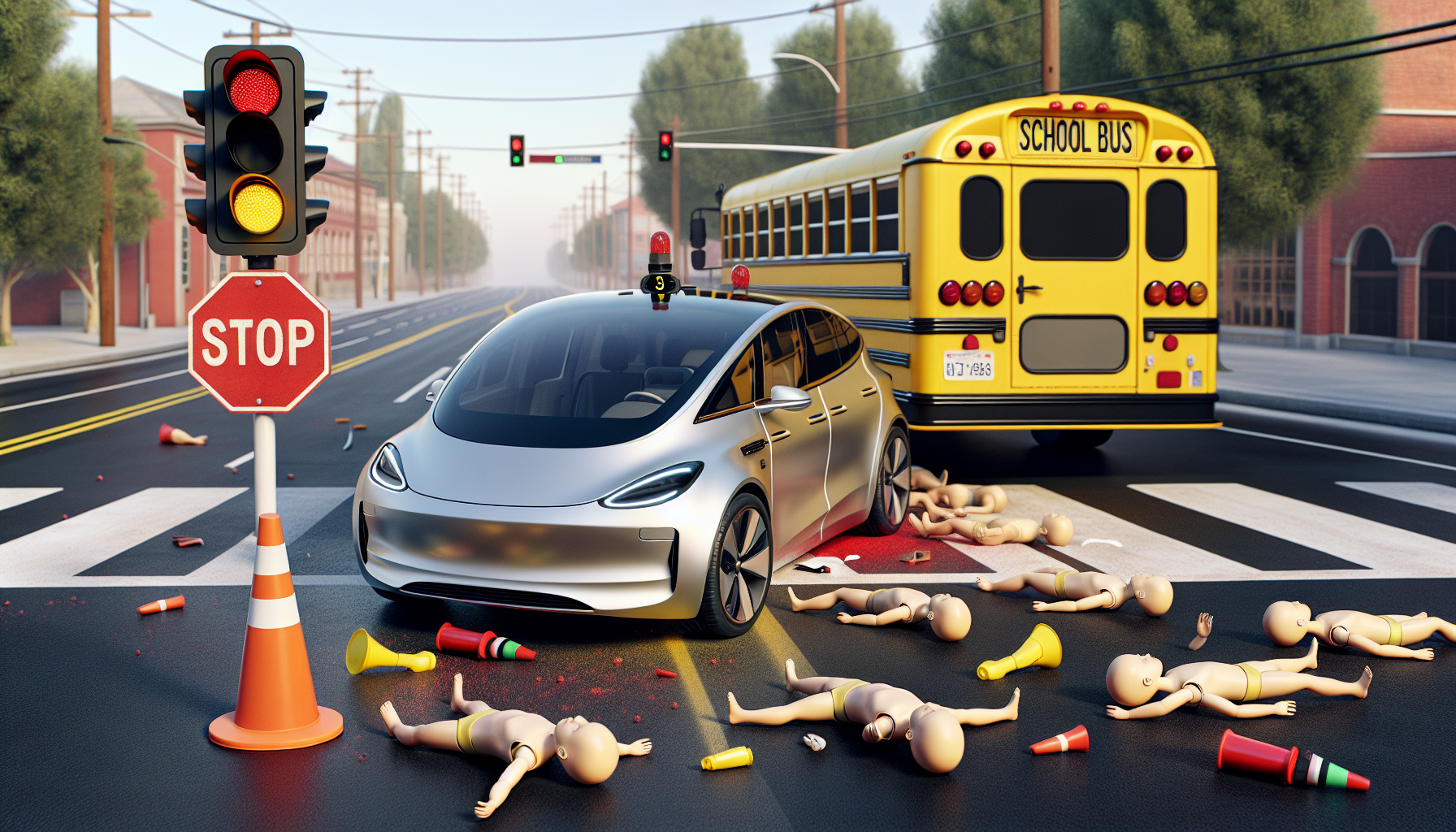
Tesla’s Full Self-Driving Mode: Are We Prepared for Self-Driving Cars?
The Current Situation of Tesla’s Full Self-Driving Technology
Tesla’s Full Self-Driving (FSD) mode has sparked considerable debate and examination. A recent showcase in Austin, Texas, has highlighted serious doubts about the preparedness of completely autonomous vehicles for public streets. During this showcase, a Tesla Model Y was seen disregarding a school bus’s flashing lights and stop signs, even colliding with child-sized mannequins. These evaluations, carried out by The Dawn Project, Tesla Takedown, and ResistAustin, emphasized the software’s consistent failures to recognize and react properly to these vital safety situations.
The Contribution of The Dawn Project
The Dawn Project, spearheaded by Dan O’Dowd, has been outspoken regarding the possible risks associated with Tesla’s FSD software. The organization has previously initiated campaigns to alert the public about the software’s shortcomings in safely navigating around school buses. It is essential to acknowledge that Dan O’Dowd’s company provides competing automated driving system software, which complicates the motivations behind these demonstrations.
Tesla’s Safety Alerts and Public Opinion
Tesla’s FSD feature is officially referred to as Full Self-Driving (Supervised), stressing the necessity for a fully attentive driver. The company issues alerts indicating that failure to follow these directives might lead to damage, serious injury, or fatality. In spite of these alerts, incidents like the April 2024 crash involving a Model S and a motorcyclist in Washington have intensified public doubts regarding the safety of the technology.
The Expected Cybercab Launch
In light of these concerns, Tesla has been gearing up for the introduction of its fully electric, fully autonomous vehicle, the Cybercab. Originally scheduled for a June 22 release, the launch has been postponed, with CEO Elon Musk citing an increased emphasis on safety. Musk has also indicated that the first Tesla to autonomously drive from the factory to a customer’s residence is anticipated by June 28, though this date is still provisional.
The Outlook for Autonomous Vehicles
The challenges encountered by Tesla’s FSD software illuminate the broader difficulties facing the autonomous vehicle sector. While the technology has tremendous potential to transform transportation, guaranteeing safety and dependability remains a crucial challenge. As companies like Tesla continue to improve their systems, the journey toward fully autonomous vehicles will likely involve extensive testing and regulatory supervision.
Conclusion
Tesla’s Full Self-Driving mode has ignited a crucial discussion regarding the readiness of autonomous vehicles for daily utilization. While the technology is progressing rapidly, recent demonstrations and occurrences emphasize the necessity for ongoing vigilance and enhancement. As Tesla and other firms explore the frontiers of possibility, prioritizing the safety of all road users must remain paramount.
Q&A Session
What is Tesla’s Full Self-Driving mode?
Tesla’s Full Self-Driving mode is an advanced driver-assistance system aimed at facilitating autonomous vehicle operation. Nevertheless, it presently necessitates a fully attentive driver to monitor and engage if needed.
Why was the Cybercab rollout postponed?
The Cybercab rollout was postponed due to safety concerns. Tesla’s CEO, Elon Musk, highlighted the company’s careful approach to guarantee the vehicle’s safety prior to its public availability.
What transpired during the Austin demonstration?
During the Austin demonstration, a Tesla Model Y neglected to stop for a school bus’s flashing lights and stop signs, crashing into child-sized mannequins, raising alarms about the software’s dependability.
Who performed the tests in Austin?
The tests were carried out by The Dawn Project, Tesla Takedown, and ResistAustin, organizations dedicated to highlighting potential safety risks associated with Tesla’s Full Self-Driving software.
How does Tesla tackle safety issues with its FSD mode?
Tesla provides warnings that the Full Self-Driving mode demands a fully attentive driver and delivers escalating alerts to maintain driver engagement. The company consistently refines its technology to improve safety.
What are the ramifications of autonomous vehicle technology?
Autonomous vehicle technology can potentially transform transportation by enhancing safety and efficiency. However, guaranteeing the reliability and safety of the technology continues to be a significant challenge for the industry.